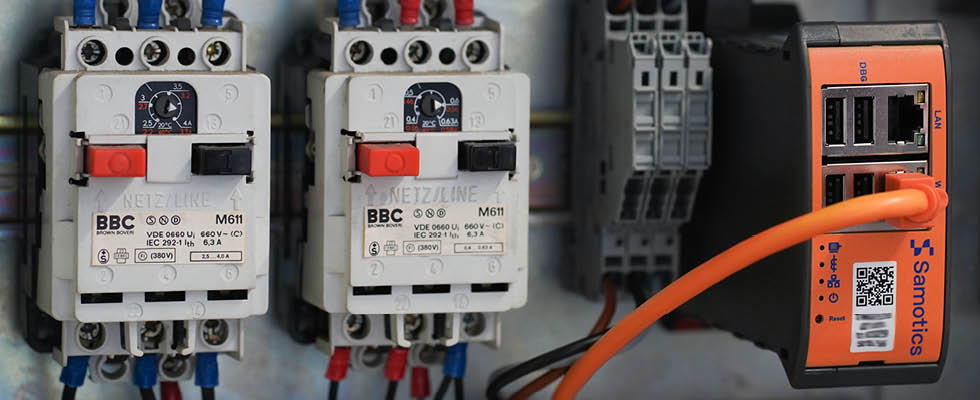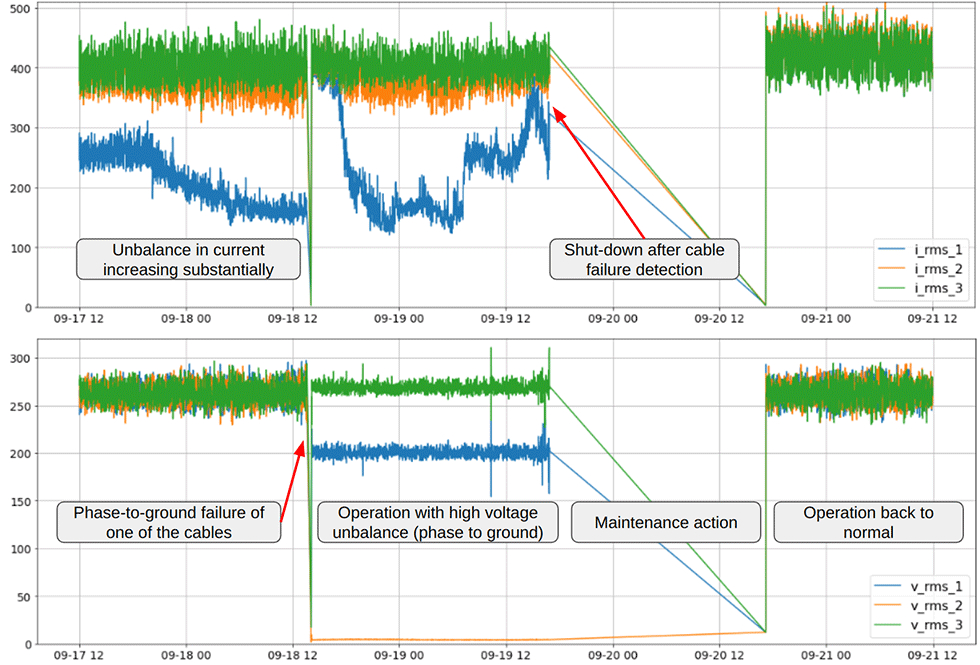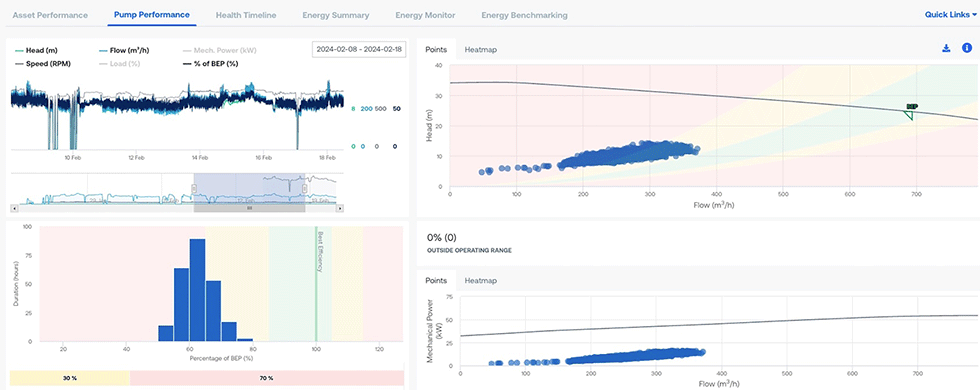
The Difference ESPs Make in Oil Production
Electric submersible pumps (ESPs) are indispensable systems in the oil industry, efficiently lifting significant volumes of fluids from wellbores to the surface. Capable of operating at depths beyond 3,000 feet and with a pumping capacity of between 500 and 50,000 barrels per day, ESPs are engineered for performance and durability.
The challenge production engineers face is optimizing ESP output and fine-tuning the trade-off between output and wear and tear. ESPs will fail, and when they do, it is a problem, triggering a costly and time-consuming process to replace them. Operators can benefit from smart monitoring systems with sensor data, enabling them to make informed decisions to better manage pump longevity and productivity.
ESPs typically have a service life of two to five years, significantly shorter than the 15-plus-year life span of surface equipment. This disparity is primarily due to the harsh conditions under which ESPs operate: extreme pressures that can reach hundreds of bars, high temperatures and the constantly changing consistency of the pumped medium.

The Biggest ESP Challenge: They Fail Often
Under these extreme conditions, it is no surprise ESPs used in oil production show typical failure rates of 20% to 50% per year. Then the real problem starts—oil production is completely halted until the non-functioning ESP, along with its miles of cabling and tubing, can be removed from the well to make way for the installation of a new ESP. The replacement itself can take days to weeks, but mobilizing everything required (workover rig, replacement components and a crew) can easily take months.
These delays in ESP replacement result in deferred production, often between 10,000 and 100,000 barrels per well per year. For an entire oil field, the cost of deferred production can run into the tens of millions of dollars annually. This is in addition to the cost of replacing the ESP itself, which can also cost millions of dollars.
What options do operators have to improve the performance of these wells? Many efforts have focused on improving response times and the effectiveness of reactive maintenance processes. Simultaneously, operators have been exploring ways to extend ESP life span by optimizing their operation to minimize wear. Data from downhole sensors is typically used to achieve this.
To face the challenge of deferred production, this article reviews a novel approach that allows prediction of ESP failures and thus, planning of workovers, from surface technology.

ESA Could Revolutionize ESP Monitoring
Electrical signature analysis (ESA) has emerged as a solution to some of the challenges associated with operating ESPs. Unlike conventional monitoring technologies, ESA does not rely on downhole sensors. Instead, it analyzes high-frequency electrical data recorded inside the motor control cabinet at the surface. Modern ESA systems incorporate machine learning algorithms to provide continuous surveillance and adeptly detect mechanical and electrical issues in the motor, pump and power cabling before they result in ESP failure. This information allows production engineers and operators to reduce unplanned downtime. For example, they can act to mobilize a workover rig in advance of any failure.
Originally developed in the 1970s for the nuclear industry, ESA technology has evolved since that time, benefiting from advancements in sensor technology, signal processing and machine learning. Modern ESA systems now match, if not exceed, the fault detection accuracy of top-tier vibration-based surveillance systems. Moreover, they provide a scalable and standardized way to monitor ESPs, independent of specific well configurations or conditions. This same technology can also be used to monitor surface-based rotating equipment such as centrifugal pumps, compressors and mixers in the same way.
The wide-ranging applicability of ESA has led to its adoption across various sectors, including chemical production, metals and mining, and notably, the water and wastewater sector. For example, in the U.K., Yorkshire Water and Anglian Water have both awarded multi-million-pound contracts to implement ESA technology for monitoring submerged pumps in their networks. These pumps, which are submerged in sewage or deep in groundwater boreholes, cannot be monitored cost-effectively using downhole, vibration-based systems or maintained based on time-based reactive approaches.
ESA technology has proved to be highly effective in accurately predicting electrical and mechanical failures across thousands of submersed or subsurface pumps in water, wastewater and chemicals sector applications. Unlike typical lead indicators from downhole sensors or ammeters for ESPs, which only provide a few hours to days of advance pre-warning time, ESA offers earlier warnings. These downhole sensors are subjected to the same harsh well conditions as the pump, which causes most downhole sensors to fail in 12 months or less. With ESA technology, operators can expect their topside electrical sensors to last longer than their ESPs.
The safe placement of ESA sensors in the motor control cabinet means they are physically isolated from active operations. Far away from the well, they cannot interact with the ESP controls nor influence production.
Longer pre-warning times and less complicated sensor operation promise to be a significant and valuable advantage ESA offers over a conventional reactive approach or traditional systems. With operators receiving earlier alerts of impending failures, they can schedule replacements in a more timely manner. In an industry where downtime can cost millions, ESA early warnings translate directly into operational value by avoiding deferred production.

Bringing ESA to ESPs With Field Trials
While tried and tested in other industries, certain technical challenges needed to be addressed to fully harness ESA’s potential for ESPs—for example, the length of the power cable. Where a groundwater source may be located just a hundred meters below ground, ESPs are often deployed at depths of up to two kilometers.
Field trials in the U.S. have yielded highly promising results. Initially, there was concern about the impact electrical waveforms traveling along kilometers of power cables would have on surveillance performance. However, ESA technology was able to overcome this challenge by deploying advanced signal processing hardware and software filtering techniques.
The ESA system was able to accurately detect a host of mechanical and electrical issues within the motor and pump. Moreover, it was even able to identify power cable faults—essential for ensuring uninterrupted operation. These findings underscore ESA’s adaptability and effectiveness across diverse operational conditions.
Large pilot projects are now underway in the U.S. and the Middle East to confirm these positive results can be replicated and scaled up across different locations and under varying conditions.
Deep ESP Performance Insights
Many ESPs operate without any system to monitor performance. In other cases, operators rely on traditional ammeters. Even where downhole sensors supply useful data, it is likely the sensor will become damaged before the end of the ESP’s run life. Therefore, the next milestone will be to expand ESA capabilities to provide deep performance insights.
Currently, ESA technology does not facilitate the monitoring of critical parameters such as inlet and discharge pressure or temperature—key metrics for optimal pump operation. However, this technology has been successfully applied to provide flow and pressure estimates in centrifugal pumps without the need for physical measurements. Electrical data, manufacturers’ pump curves and affinity laws provide a sufficient basis for ESA technology to estimate these parameters. Extending this “sensorless” performance insight to ESP operations could add significant value. That said, some challenges remain, particularly in accurately accounting for the varying fluid properties of produced liquids.
That is why promising work to integrate diverse data sources into the ESA analytical framework is already in progress, including fluid characteristics from surface measurements. This innovative approach aims to enhance ESA systems, enabling them to track pressure and flow downhole more accurately while augmenting their overall value.
The Future of ESA for ESPs: Integration & Innovation
ESA’s potential is vast: a cost-effective, insightful and efficient tool for reducing deferred production and improving ESP run life. Its future is geared toward increasing its utility by integrating additional data sources, such as fluid characteristics, into its monitoring capabilities. ESA is also being incorporated into variable speed drives so future iterations will be able to monitor ESP conditions directly, eliminating the need for separate electrical sensor installations within the motor control cabinet.
The pace of development for these systems is closely tied to the volume and variety of data they process. They learn from experience, meaning the algorithms behind ESA technology continue to learn and improve as they encounter more diverse operational environments and pump types. This iterative enhancement cycle is set to establish ESA as an indispensable technology in oil and gas operations, monitoring all rotating equipment both at the surface and downhole. As the technology evolves, so too do its deployment cycles, data collection and resulting improvements, promising a bright future for ESA in the oil and gas sector.


